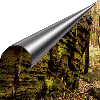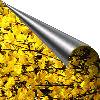

 | Slowinski National Park |  |




 | Slowinski National Park |  |


Slowinski National Park was established on January 1 1967. Originally, a plan to create a national park by the sea-side was considered just after the Second World War in 1945. The total area of the Park is 18,619 ha. Of this area, water covers 53.9 %, forests 24.5 %, beaches and dunes - 5.1 %, swamps and moors 7.7 %, meadows and pastures - 8.1 %. The name of the Park originates from an old ethnic group - Slowincy - Slav progeny, who have lived in this area for ages. A skansen in Kluki, which presents their culture, is one of the Park's attractions. The number of visitors reaches up to 800 000 annually.
The symbol of the Park is a seagull (Larus argentatus), an outline of a dune and blue water. The park preserves the most beautiful part of the Baltic southern coast, with the biggest sandy dunes in Europe, which move under the influence of strong, stormy winds. To preserve the plant cover, forests, peat, diversity of fauna, and beautiful landscape, some 15 strict reserves, with the combined area of over 6,650 ha, were established in the Park. The Park was recognized as an outstanding natural value and registered on the World List of Biosphere Reserves in 1967. The inclusion of this Park on the list demonstrates its particular importance for the world's nature conservation at a supraregional scale.
Natural values
Slowinski National Park is situated in the eastern part of Pobrzeze Slowinskie. The whole area is located within a range shaped by the youngest Vistulian glaciation. The predominant features of the Park's landscape are coastal lakes, beaches and dunes of different relative heights. The Czolpinko dune, which is overgrown with the pine forest, is the highest (56.5 m). The other dunes are Stilo dune (45.7 m), Gory Wschodnie with Lacka dune (42.5 m) and Lesna dune (25.7 m).
Another important feature is the coastal lakes, Lebsko (71.4 sq. km, mean depth = 6.3 m), Gardno (24.7 sq. km, mean depth = 2.6 m), Dolgie Wielkie (1.5 sq. km, mean depth = 2.9 m), and Dolgie Male (6.3 ha, mean depth = 1.7 m). They comprise over 50 % of the whole Park area. The two largest coastal lakes are separated from the Baltic Sea by narrow, sandy strips of land. Both were created as a result of closing the sea bays by the sandy bars of Leba and Gardno, respectively. The two largest lakes are very shallow water reservoirs, surrounded by reeds and sedges, which make good shelters for rich fauna of water birds. These lakes are strict reserves. Swamps, moors, heathes and meadows spread out around the lakes, especially on their southern shores, and those are dissected by numerous rivers and outlet canals. The Leba River, which flows into Lebsko lake, and the Lupawa River, flowing into Gardno lake, are the biggest rivers in this area.
There are no Pleistocene deposits in the area of the park. Dunes, which are dissected by moors and heath and are made of young Holocene deposits, cover most of the Park area. The majority of dunes are overgrown with grass and trees. They are called grey dunes. A small number of dunes have no growing plants and are known as white dunes. The soil-forming processes are very slow on the dunes, and the existing soils are of initial character. Well shaped podsolic soils, which are present in areas overgrown by pine forest, are included into the gleyed podsolic type of soil. There are also fossil relict soils located under the thick cover of dune sand on some areas, and they are remnants of former forests.
The soil on the moors is more differentiated, since there are low, transition, and high moors represented in the Park. Low moors cover a larger area than the two other types. They are found in the river valleys, close to the lakes, and they are overgrown by meadow and rushes vegetation. The high moors are found on local ground elevations and they are overgrown by peat communities, containing atlantic species of plants.
The climate of the Slowinski Mational Park is characterized by relatively mild winters, warm, but not very hot summers, and by great relative humidity with a low annual precipitation (about 665 mm). The mean annual temperature in the Park is 7.5oC and it is higher than in the neighboring lake district, but lower than in the center of Poland. February is the coldest month (-1.2oC) and July is the warmest (16.5oC). Spring comes later and is cooler than in central parts of Poland. Autumn is warmer and lasts longer. The sea-side is where autumn is the longest in Poland (60-70 days), while winter is the shortest (about 60 days). Wind is an important factor, regulating life conditions at the seaside. Western winds prevail in the area. North-western winds, blowing from the sea, prevail in the summer.
This wind direction in summer has a decisive influence on the dune formation and displacement. The height of these moving dunes reaches a dozen or so meters. These winds are also responsible for the creation of the coastal lakes, since they cause the closing of sea bays by sand-bars.
Vegetation
The vascular flora in the Park is very diverse, and for that reason, the Slowinski National Park is among those with the most interesting vegetation. It consists of about 830 species, representative of different habitats and geographical elements. There are some atlantic and subatlantic species like swamp heath (Erica tetralix), sedge (Carex arenaria), and European wax-myrtle (Myrica gale). There are also some northern species such as cloudberry (Rubus chamaemorus), cyperaceous herb (Trichophorum caespitosum), and northern twin-flower (Linmaea borealis). The species of three habitat groups
are found in the Park area. About 30 % of the species are rare, nearly 50 species are preserved, including the rarest, orchidaceous plants (Orchidaceae). Synanthrophic flora consists of nearly 70 species, and a majority of them grow in separate localities.
- dune,
- pine forest and
- plants in high and transition moors
More than 50 plant associations, including about 10 forest and scrub associations, and more than 40 non-forest ones, have been distinguished in the Park. Approximately 10 associations cannot be found anywhere else in Poland. Some of them are of pioneer character and they are important in anchoring and stabilizing the moving sands. They are associated mainly with plants inhabiting the white and grey dunes, and on each of them, two associations have been distinguished. The most important among them are lyme- and beach-grass (Elmo-Ammophiletum) associations. They are the wind resistant grasses which consolidate the accumulated sands. The flora of dunes is unique in Europe.
Among the forest communities, the most developed is the sea-side pine forest (Empetro nigri-Pinetum) with subassociations of cladonietosum, piroletosum, typicum and ericetosum tetralicis. Swamp forest (Vaccinio uliginosi-Pinetum) and swampy alder wood (Carici elongatae-Alnetum) are also important. In addition, 13 water, 22 peat and swamp, and 6 meadow-pasture plant associations have been distinguished in the Park.
Fauna
The fauna of the Slowinski National Park has not been well researched yet, with the exception of the local birds. About 255 species of birds, that is ca. 70% of those found in Poland, have been recorded here. Such a great number and variety results from the fact, that many environments have preserved their natural features within the Park. The Park, sitting by the sea-side, is located on the most important way of annual bird migrations.
The avifauna of water communities is most diverse and both lake Lebsko and Gardno are very rich in this respect. Both migratory and breeding birds are numerous. For example, there are more than 20,000 pairs of black-headed gulls (Larus ridibundus), which live in colonies in the Park. They are accompanied by mallards (Anas platyrhynchos, Anas strepera, Aythya ferina, and Aythya fuligula). The crested grebes (Pediceps cristatus) and mute swans (Cygnus olor) live on the edges of islands. Both lakes are the regular breeding places of common tern (Chlidonias niger and Sterna hirundo). In both spring and autumn, one can observe thousands of mallards, mergansers (Mergus merganser), and swans (Cygnus olor, Cygnus cygnus and Cygnus bewickii). During the migration time one can see almost all of the Polish species of anserines and even such rare species like Anser erythropus, Bernicla leucopsis, and Bernicla bernicla.
Some strict reserves

- Bielice - soils and flora, 3.9 ha,
- Bory torfowe - peats, soils and forest, 9.3 ha,
- Gackie Legi - fauna, 171 ha,
- Gardnienskie Legi - fauna, 209 ha,
- Jezioro Dolgie Male - lake and flora, 6.3 ha,
- Klukowe Buki - forest, 76.8 ha,
- Klukowe Legi - fauna, 171 ha,
- Mierzeja - dunes and forest, 3,410 ha,
- Moroszka - flora, 54.2 ha,
- Olszyna - forest, 19.2 ha,
- Wyspa Kamienna - fauna, 0.6 ha,
- Zarnowskie Legi - fauna, 145 ha.



If you know any WWW sites that reference Polish National Parks please e-mail them to me.
Your input will be greatly appreciated.